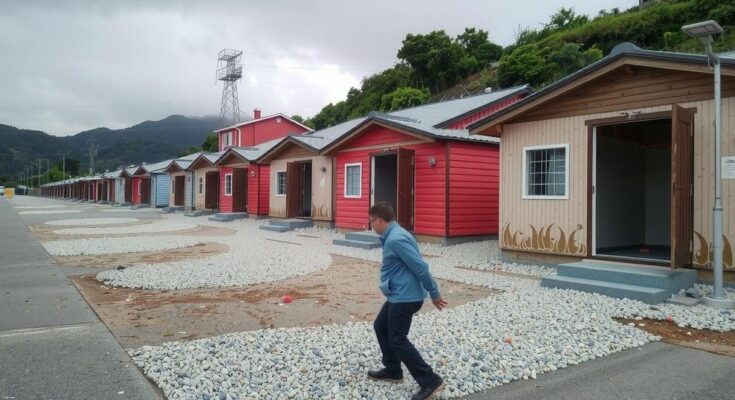One year after a devastating 7.5-magnitude earthquake on January 1, 2024, residents of the Noto Peninsula, like 83-year-old Sueko Naka, confront a lingering sense of fear and uncertainty as they struggle to rebuild their lives in temporary accommodations. The disaster claimed nearly 470 lives and left a lasting impact on the community and its infrastructure, exacerbated by ongoing aftershocks and significant demographic decline. Wajima’s recovery efforts are slow, with many families facing challenges in reintegrating into their homes and addressing deep-rooted fears of future disasters.
In the wake of the 7.5-magnitude earthquake that struck the Noto Peninsula on New Year’s Day 2024, local residents grapple with the loss of their homes and a profound sense of uncertainty. Among them is 83-year-old Sueko Naka, who now resides in a small temporary housing unit with her husband and daughter, separated from the remains of their ancestral home. This earthquake, Japan’s deadliest in over a decade, claimed nearly 470 lives, severely impacting both the community and infrastructure in Wajima City.
Despite receiving initial support following the disaster, Naka reflects on the daunting reality of reconciling her current temporary circumstance. “When I imagine I might die here, I can’t sleep well,” she expressed, highlighting her struggle against the overwhelming sense of dislocation experienced by many survivors. A year later, the region remains in peril, as aftershocks and challenging weather continue to threaten recovery efforts, which have been hindered by slow demolition processes and an urgent need for reconstruction amidst vast devastation.
Moreover, the cumulative impact of natural disasters has exacerbated an ongoing demographic crisis in the area, prompting an exodus of residents. With approximately 21,000 people now living in Wajima, the city has seen a decrease in its population by 2,500 compared to the previous year. The local community faces both the immediate challenges of rebuilding their lives and the broader threat of demographic decline, further complicating the townspeople’s ability to restore their homes.
As the Noto Peninsula endures the aftermath of the earthquake and subsequent natural calamities, questions about the future loom large for families like Naka’s. They are left to grapple with the complex interplay of rebuilding their lives, navigating persistent fears, and considering the potential for future disasters, which leads to a pervasive sense of apprehension during what is traditionally a time of celebration.
In conclusion, the New Year has transformed from a time of joy to one of anxiety for Noto Peninsula residents, as they continually confront the relentless challenges posed by natural disasters while trying to restore their lives and homes. The enduring impacts of the earthquake underscore a lingering fear among survivors, as they question their futures and the sustainability of their communities.
The challenges facing the residents are compounded by the gradual depopulation of the area, raising critical concerns for the future of Wajima and its surrounding communities.
The Noto Peninsula in Ishikawa prefecture suffered a devastating earthquake on January 1, 2024, known for its significant impact on the local population and infrastructure. This disaster not only led to a high loss of life but also led to extensive damage to homes and essential facilities, particularly in Wajima City. The aftermath of the earthquake has been further complicated by continuous aftershocks and severe weather, which have hindered recovery efforts and raised fears among the survivors. The situation reflects broader demographic challenges facing the region, such as an aging population and ongoing depopulation, posing significant socioeconomic challenges and affecting community stability.
The aftermath of the 2024 earthquake in the Noto Peninsula exemplifies the struggle of communities faced with repeated natural disasters. Residents like Sueko Naka, displaced from their homes, grapple with uncertainty and fear as they navigate a challenging recovery process. The combination of psychological trauma, infrastructure destruction, and demographic decline paints a somber picture of the future for Wajima and its inhabitants, as they strive for stability amidst continuing adversity.
Original Source: japantoday.com




